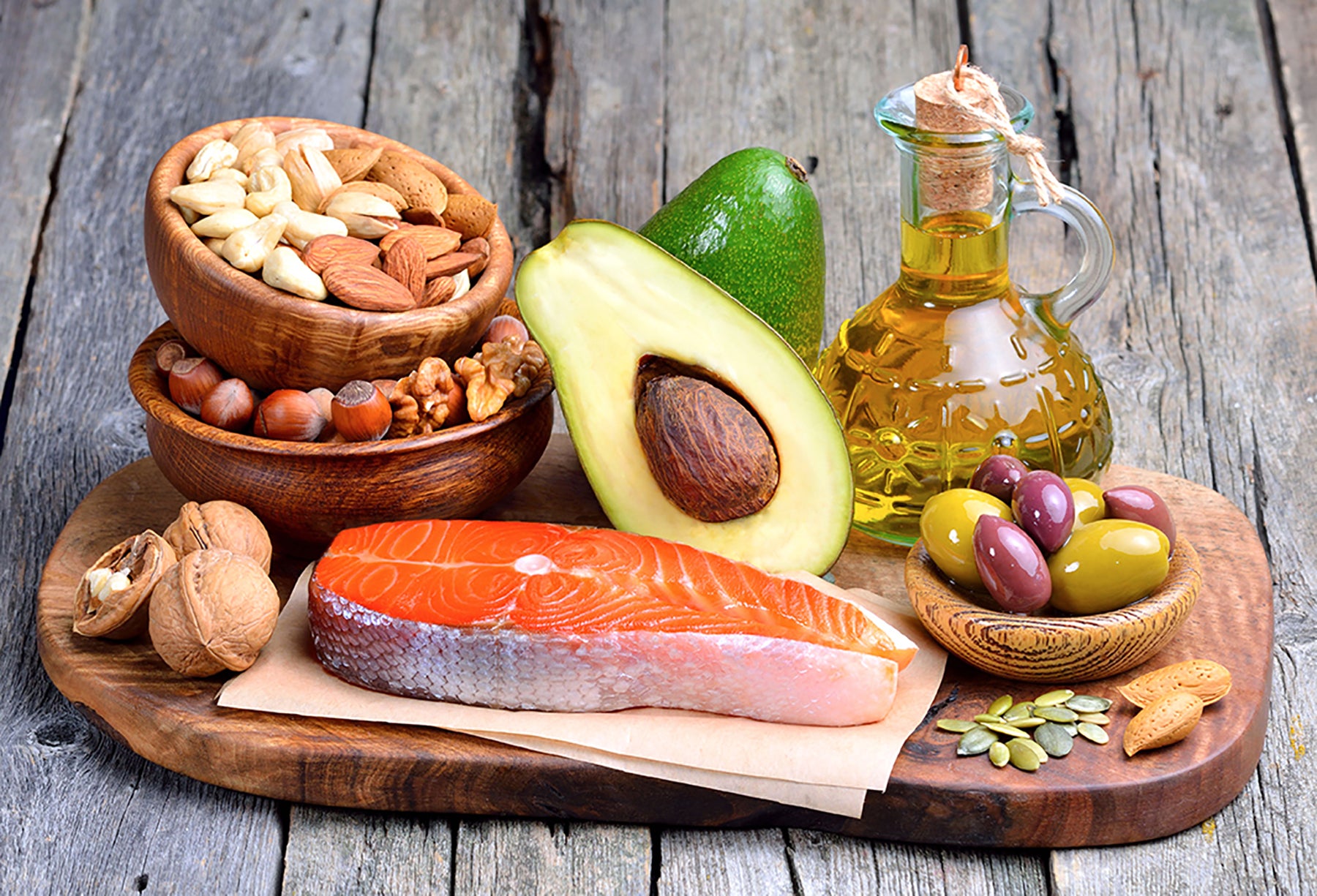Clean Eating Ingredient Guidelines

1. Healthy fats
Cook with and consume healthy fats on a daily basis. Opt for fats such as:
- Olive oil
- Extra-virgin olive oil
- Coconut oil
- Organic unsalted butter (preferably grass-fed)
- Organic ghee
- High-oleic safflower oil
- Sunflower oil
- Grape seed oil
- Avocado
2. Flours and grains
Look for 100% whole grain varieties of the following, and look for options without additives or preservatives.
- Breads
- Tortillas
- Pastas
- Rice
- Flours
- Ancient Grains such as quinoa
- Soba noodles
- Cornmeal
- Bread crumbs (or panko)
Gluten-free flours such as coconut, brown rice (no white rice flours) are also acceptable.
3. Dairy
Use full-fat organic (and grass-fed where possible) options of the following:
- Plain yogurt
- Greek yogurt
- Buttermilk
- Sour cream
- Cottage cheese
- Cream cheese
- Cheese (goat, Parmesan, ricotta, etc.)
- Milk
4. Nondairy/Protein Alternatives
Unsweetened plain almond, soy, rice and coconut milks (made without additives such as carrageenan)
- Organic tofu
- Organic tempeh
5. Seafood
Sustainable fish and shellfish (check seafoodwatch.org for a list of best choices).
6. Produce
Purchase organic vegetables and fruits on ‘The Dirty Dozen’ list (ewg.org) but otherwise conventional produce is acceptable.
Additive-free frozen fruits and vegetables are permitted.
7. Meats
Opt for hormone- and antibiotic-free organic lean meats whenever possible (and grass-fed if your budget allows).
- Poultry
- Lean red meats
- All-natural/organic bacon or sausages
- Uncured, all-natural nitrite- and nitrate-free deli meats such as lean ham
8. Salts and Herbs
- Sea salt or kosher salt (not table salt)
- Herbs should be free of additives and artificial ingredients
9. Nuts and Seeds
- Raw unsalted nuts and seeds
- Natural or organic unsalted nut and seed butters
10. Sweeteners
Try to limit added sugar intake as much as possible, but when you want a sweet treat or are making dessert, the following sweeteners are CE-approved:
- Date sugar
- Raw honey
- Pure maple syrup
- Sucanat
- Stevia
- Organic evaporated cane juice
- Cacao nibs
- Dark chocolate – at least 70%
- Unsweetened shredded coconut
- Pure vanilla extract
- Unsweetened cocoa powder
11. Juices
- Lemon and lime juice must be fresh and 100% juice
- 100% fruit juices (not from concentrate)
- Cold-pressed (preferably homemade) juices made of 100% fruits and vegetables
12. Thickeners
- Arrowroot
- Tapioca starch
- Potato starch
13. Canned and Jarred Ingredients
If buying canned beans or tomatoes, only purchase ones that are available in BPA-free cans. Jarred or boxed tomatoes are also great options. Coconut milk from BPA-free cans is also acceptable.
14. Condiments
Make your own salad dressings and condiments whenever possible; however, the following store-bought condiments can be used in recipes. Always read the label to ensure the product contains no added sugars, additives or preservatives.
- Hot sauce
- Vinegars (red wine vinegar, balsamic, apple cider, etc.)
- Dijon mustard
- Reduced-sodium soy sauce or tamari
15. Miscellaneous Ingredients
- Unsalted tomato paste
- Agar agar or unflavored gelatin
- Low-sodium chicken or vegetable broth
- Natural liquid smoke
- Unsweetened dried berries or unsweetened 100% fruit sauce